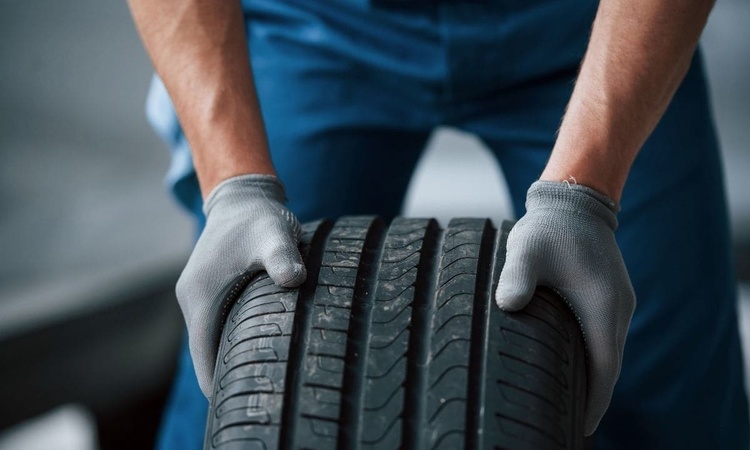Preparing your ride for long-distance trips
Long-distance trips require deliberate preparation to reduce risk and improve comfort. This article outlines essential checks for maintenance, tires, battery and charging (for electric and hybrid vehicles), drivetrain diagnostics, telematics, and paperwork to help your vehicle perform reliably across long journeys.

Planning a long-distance drive involves more than packing luggage and mapping stops. A systematic approach to vehicle readiness reduces the chance of breakdowns, improves fuel or energy efficiency, and protects resale value. This article covers preventative maintenance, tires and servicing, electric and hybrid considerations, drivetrain and telematics checks, insurance and financing context, and a practical cost-comparison section to help you budget for pre-trip work.
Maintenance and inspection checklist
A thorough inspection before a long trip should cover fluids, filters, lights, wipers, and belts. Change engine oil and filter if due, top up coolant, brake, and transmission fluids, and check windshield washer fluid. Replace cabin and engine air filters if clogged. Walk around the vehicle to confirm all lights work and windshield wipers are not streaking. Look under the vehicle for fluid leaks and check that the spare tire, jack, and lug wrench are present and in good condition. A pre-trip checklist reduces the likelihood of preventable roadside repairs.
Tires, servicing, and diagnostics
Tires are critical for safety and efficiency on long hauls. Inspect tread depth, sidewalls for cuts or bulges, and verify uniform wear patterns that could indicate alignment issues. Inflate tires to the manufacturer’s recommended pressures, accounting for the increased load when carrying cargo. Consider a service visit for a wheel alignment and balancing if vibrations or uneven wear are present. Run a diagnostics scan if the check-engine light or other warning lights are active; resolving issues early prevents more costly failures during the trip.
Electric and hybrid: charging and battery care
For electric and hybrid vehicles, battery health and charging strategy are central. Verify the state of charge and the battery management system status via onboard diagnostics or manufacturer apps. Plan charging stops along your route using reputable networks and confirm connector compatibility. Bring charging cables and adapters recommended by your vehicle maker. Avoid charging to 100% unless necessary for range, and avoid prolonged low states of charge during storage. If the battery shows unusual degradation or warning messages, schedule servicing before departure.
Drivetrain and telematics checks
Inspect drivetrain components such as CV joints, driveshafts, differential fluid, and transmission fluid levels where applicable. Listen for unusual noises during a short test drive to detect vibrations or binding. Update telematics and navigation maps, and ensure in-vehicle connectivity functions for route guidance and emergency services. Telematics can provide location data, diagnostic alerts, and roadside assistance integration—confirm subscription services are active and credentials are accessible in your vehicle or app.
Insurance, financing, depreciation, resale considerations
Review your insurance coverage to ensure it meets the needs of long-distance travel, including roadside assistance, rental coverage, and comprehensive protection if crossing regions. If a vehicle is financed or leased, check any restrictions on long trips and ensure documentation is in the vehicle. Long trips can affect depreciation and resale value: keeping service records, avoiding damage, and addressing repairs promptly helps maintain value. Understand that long-distance use increases wear on tires, brakes, and drivetrain components and factor expected servicing into your budget.
Cost comparisons for common services
Below are typical cost estimates for common pre-trip services and products from verifiable providers. These figures reflect typical ranges encountered in the market but will vary by location, vehicle model, and service complexity.
| Product/Service | Provider | Cost Estimation |
|---|---|---|
| Oil change (conventional) | Jiffy Lube | $35–$75 |
| Tire replacement (per tire, mid-range) | Discount Tire | $100–$300 |
| Wheel alignment | Firestone Complete Auto Care | $75–$150 |
| Roadside assistance subscription | AAA | $50–$150/year |
| EV battery diagnostic / basic service | Tesla Service / Authorized Shops | $100–$300 (diagnostic); replacement varies widely ($5,000–$20,000+) |
Prices, rates, or cost estimates mentioned in this article are based on the latest available information but may change over time. Independent research is advised before making financial decisions.
When planning expenses, include labor, taxes, and potential parts markups. For EVs, diagnostics are relatively inexpensive but major repairs or battery replacements are costly; for ICE vehicles, routine fluid changes and brakes are predictable recurring costs. Shop locally for competitive quotes and confirm warranties on parts and labor.
A final preparatory step is creating an emergency kit: basic tools, a flashlight, jumper cables or a portable EV charger if compatible, first-aid supplies, and printed copies of important documents. Schedule a professional inspection if you are unsure about any component or if your vehicle is due for major servicing. Careful preparation preserves safety, reduces unexpected downtime, and supports long-term vehicle value.
In summary, a systematic pre-trip routine—covering maintenance, tire and drivetrain checks, EV-specific needs, telematics readiness, and cost planning—helps ensure a smoother long-distance journey and better long-term ownership outcomes.





